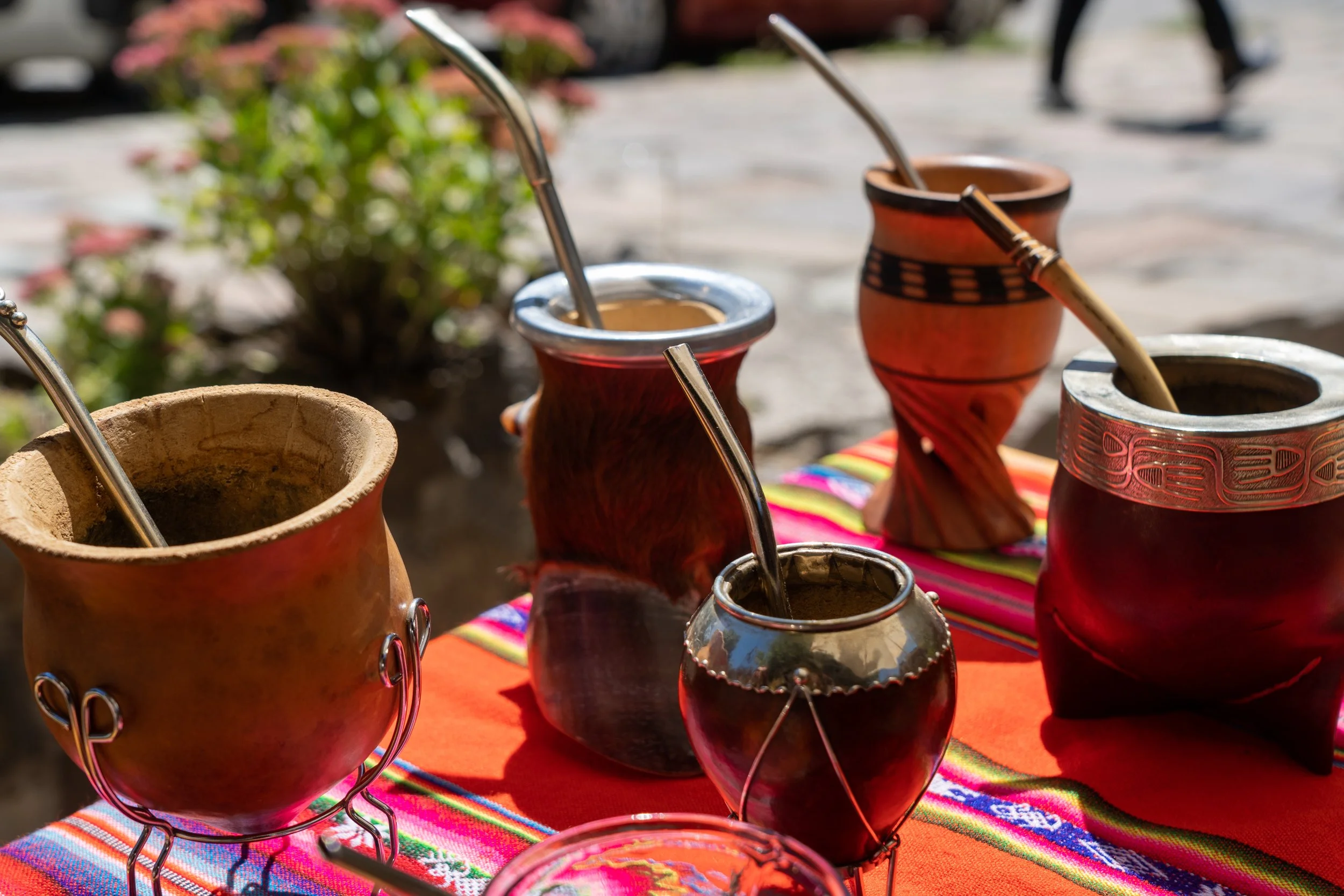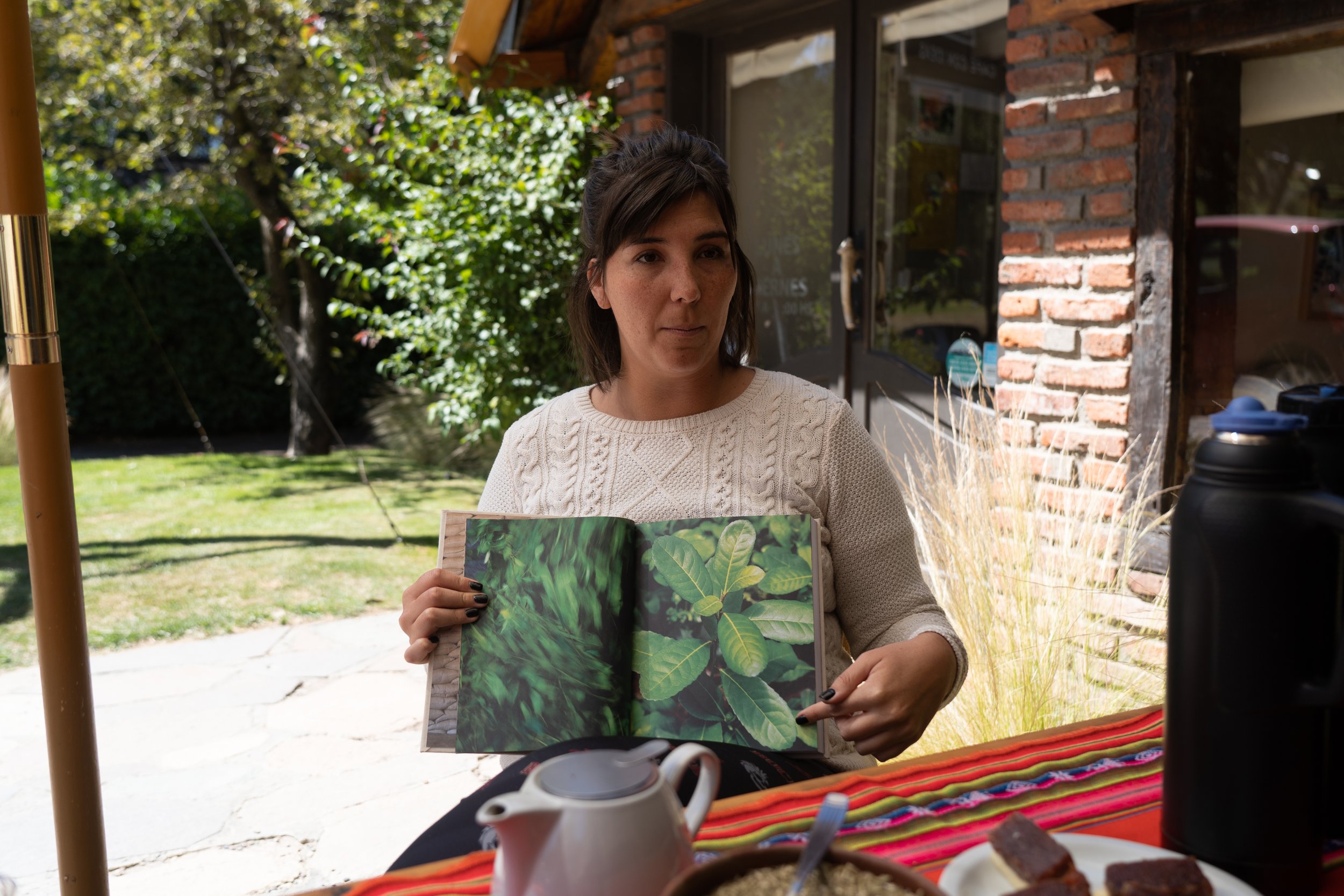Bariloche, Argentina - Day 1

Friday, February 17, 2023
Good morning from Bariloche! What a view to wake up to with Lago Nahuel Huapi outside our windows.
Today was a Top 10 weather day in Bariloche — we were due for one of those! The sun was shining with light winds and temperature in the low 70’s.
Andi decided he’d had enough of driving through Bariloche’s traffic and hilly streets, so we opted to walk into downtown for breakfast this morning. We’re staying about a mile and a half from the central part of town and there’s a very nice sidewalk the follows the lake all the way there. Or, if you’re like Tory and Aden, you can walk on top of the rock wall instead.
On our walk, we saw several of these peculiar-looking birds waddling around the lake. Tory and Aden thought the birds looked like a cross between a goose and a kiwi, so we nicknamed them “gooswis.” Doesn’t really roll off the tongue. The bird is actually called the Andean Ibis & they seem to be very comfortable around people in towns & cities, perched on tin roofs and pecking for bugs on people’s lawns.
Andi choose a restaurant called Maleza for breakfast. We ordered their “brunch for two” which included toast & jam, scrambled eggs, a bagel with choice of spread, yogurt with granola, fruit cocktail, coffee & juice for $6,600 Argentine pesos (or, about $17 US with the Blue Dollar exchange). It was the perfect amount of food for all four of us to share inside a bright, sunny restaurant atmosphere.
After breakfast, we walked further into downtown toward the Centro Civico. This is Bariloche’s town square surrounded by several alpine-style wood and stone buildings. This style of architecture reflects the mountain/ski culture of the city, as well as its deep German roots. Many Germans migrated to both North and South America in the late 1800’s and early 1900’s, and the city of Bariloche itself was established by a German immigrant in 1895.
Also — it’s no secret that Argentina was a safe-haven to Nazi Germans post-WW2. Many high-ranking German officials found refuge in Argentina after the war, specifically in Patagonian towns like Bariloche.
The Centro Civico town square in Bariloche connects to Mitre Street which is lined with shopping, restaurants, and breweries. Bariloche is known for its chocolate and there are several big chocolate shops located along this street as well. We walked through here, but didn’t stop to buy anything specifically. Honestly, Andi and I are not very big fans of crowds and it was a little too busy for our liking. We did discover a cool food truck courtyard tucked between buildings. We’d just eaten breakfast so we weren’t looking for food, but I imagine this is a fun place to come for lunch or dinner.
We walked back to our condo building at a leisurely pace. The hills and traffic are so intense in this city that it’s it’s like gambling with your life when crossing the street. There are very few stop signs or stop lights in Bariloche; people just drive whenever and wherever they like. I think pedestrians are technically suppose to have the right away, but that’s not a given when cars and buses are speeding up or down a steep roadway. Watching locals, they just — go — weaving their bodies in and out of traffic like it’s no big deal. It’s exhausting to walk and drive our rental car through that chaos.
Phew! We made it. That’s our condo located on the shores of Nahuel Huapi.
Back at our condo, Andi worked in the bedroom while I blogged and Tory and Aden had some chill time on their iPhones.
Then, at 2:30pm, we hopped in our rental car and drove to Vertiente Café for a Yerba mate class. Angentinians are obsessed with Yerba mate; almost every person we see is carrying a mate cup and giant thermos of hot water. Gas stations, restaurants, and cafes advertise the sale of “agua caliente” (hot water) on their windows and signage. It’s fascinating! Andi and I wanted to know what the hype was all about.
We met Melanie, our instructor, in front of Vertiente Café where she had a beautiful table set for our class.
We spent some time introducing ourselves, and then Melanie explained to us what Yerba Mate tea is and the history of the plant. The drink originated with the indigenous people of Argentina and Paraguay. They discovered that if they chewed the leaves of the Yerba plant, they had more energy.
Then, the Spanish took control of Argentina in the 1700’s, spreading their Catholic religion and practices. The Spanish believed Yerba Mate to be a plant of the devil because it altered the way people thought and felt. Over time, however, they began to accept Yerba Mate as a safe drink that sharpened their focus and gave them more energy. Yerba Mate tea contains about the same amount of caffeine as a cup of coffee.
The Yerba Mate plant is native to Argentina, Uruguay, and Paraguay, and only grows in very wet, humid climates. Within the first hour of picking, the leaves must be directly exposed to heat from fire to delay fermentation and oxidation. The plant is then dried for 6-12 months. Finally, leaves and stems are crushed and packaged for use. Just like coffee or wine, blends and consistency of Yerba Mate differ by country. Brazilians prefer a powder-like version of Yerba (similar in appearance to matcha) while Argentinians consume a more coarsely-chopped blend.
The most traditional type of mate cup is a dried pumpkin gourd. The inside of the cup must be treated before use by making mate, dumping it out, scraping the organic sides of the gourd, and repeating this process several times. Or, a more sanitary option is to use a glass cup which can be washed & cleaned. We have seen people using all shapes, sizes, and styles of mate gourds. They are entire shops dedicated to selling mate cups and accessories in Argentina.
Each cup also has a bombilla (pronounced bawm-bee-yah) stainless steel straw with a filter at the bottom. The filter prevents any Yerba leaves from making it to your mouth. The bigger the mate gourd, the longer the bombilla.
After a detailed explanation about the vessel of mate, Melanie walked us through the steps of preparing the drink. She was so sweet with the kids, involving them in every step. Tory and Aden were our cebador/cebadores (the person who prepares the mate).
First, Tory began by filling the mate cup 3/4 full of Yerba. Then, she put her hand on the top of the cup and shook it a few times to mix up the tea. “Don’t worry about making a mess,” Melanie told the kids, “If you’re not making a mess while making Mate, you’re not doing it right.”
Next, Melanie instructed Tory to tilt the cup to one side to create an opening in the glass for the water.
Tory began to slowly pour the hot water (not boiling!) into the glass. Melanie advised her to wait a few seconds for the water to seep into the leaves, and then continue to pour in more water to the top of the glass.
Finally, Melanie instructed Tory to insert the bombilla into the glass at an angle.
There are many rituals in how to prepare and drink mate. The cebador (the person who prepared the mate) always drinks the first cup to make sure it’s good. Then, the cebador adds more water to the leaves and passes the gourd to someone else (a friend, family member, co-worker, etc.) Yerba Mate is meant to be shared with others. When that person is done, they pass gourd back to the cebador who adds more hot water. The cebador continues to pass the mate around, keeping track of the order in which the cup is passed. Only the cebador can add more water to the gourd. When someone is done drinking the mate, they simply tell the cebador “gracias” which means “thanks, I enjoyed it, but now I am done.”
It’s bad form to move the bombilla around in the gourd because it can get clogged up with leaves. Also, you don’t want to leave the Yerba Mate sitting around. Once the cebador pours the water in, you’ve got to drink it or the drink becomes bitter. Wait too long, and “the leaves are dead,” Melanie said.
We tried three different blends of Yerba Mate; each with its own distinctive flavor. In Argentinian grocery stores, there’s an entire aisle devoted to Yerba Mate. Melanie said it’s rare to find Yerba Mate on the menu at cafes and restaurants — it’s a custom that’s meant to be experienced in the home or out with friends.
Since Yerba Mate does contain caffeine, Melanie made a “kid version” for Tory and Aden to drink. She poured hot water over a Yerba Mate tea bag, and then added milk and sugar after the tea steeped in water. She talked a lot about Yerba Mate being an appetite suppressant, though she said the tea is often consumed alongside the traditional Argentinian treat, alfajores.
The Yerba Mate class was so informative and a really fun cultural experience. We enjoyed it!
Afterwards, we walked across the street to Plaza Belgrano so Tory and Aden could play on the playground. Andi and I were both feeling the effects of the Yerba Mate — I thought my heart was going to beat out of my chest! Too much mate for us beginners? I think so.
The park was busy with Argentinian families, and every group of adults there were passing a mate gourd back and forth to one another. How were they not hyped on its effects, too? I started to worry we weren’t going to be able to sleep tonight.
A while later, we walked next door to Oveja Negra Centro for ice cream and wine. The ice cream in Argentina comes in cups that are cake cones which is the best of both worlds! Aden ordered two scoops of pear sorbet and vanilla, Tory picked strawberry and chocolate, and Andi and I shared one scoop of menta granizada. I heard from another traveling family that menta granizada (like mint chocolate chip) is the best flavor of helado here, and the internet recommendation wasn’t wrong! Delish.
Tory didn’t like Yerba Mate, so she only tried a sip of the tea during our class. Aden, however, had way more than I realized. He was literally bouncing off the walls inside this restaurant. Yikes, so this is what happens when you give your nine-year-old caffeine?
We found ourselves a table outside to enjoy our treats while Aden literally danced and jumped around the patio. What a goof.
Around 6:00pm, we walked back to our rental car parked by the cafe and then drove back to our condo. Andi decided to order take-out from Pedido-Ya for dinner so we didn’t have to go out again. The food delivery app has been spotty in Bariloche, so he had a heck of a time getting our order to process. Eventually, a mix of empanadas, chicken parmesan, a chicken salad, and three different desserts showed up at our doorstep. We ate dinner in our apartment, and then hung at home the rest of the evening.
We’re in Bariloche for a few more days & there’s still more to explore.


























